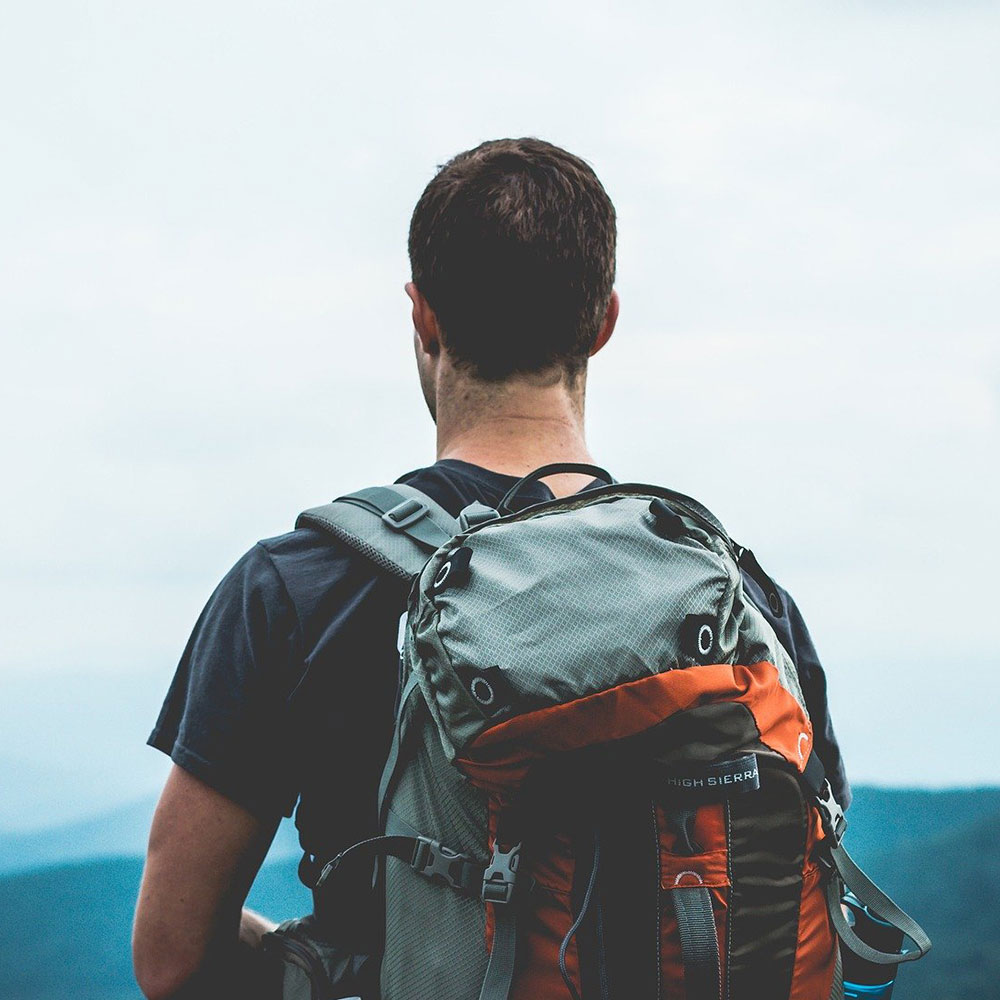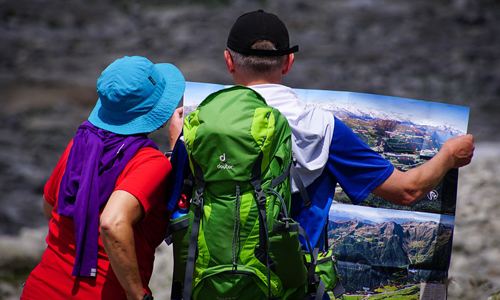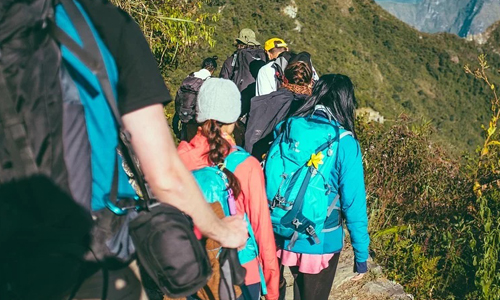How to Plan a Safe Hike
Author

Javier Olivo is a blogger and a writer by heart. In the past, Javier worked as a woodcarver in a furniture store in his hometown. Being exposed to the outdoors, he often likes to give advice to people who prefer trekking in the woods. During his free time, Javier loves going to the gym and playing football.
Hiking, trekking and trail walking are some of the most popular outdoor activities in the UK these days. But the adventures come with some risks as well and so I hope this blog will help you plan a safer and fun hike.
Stick to the Route
If you are planning to or have already told somebody about your route then its in your best interest that you stick to the  same route. This way, if you get lost, you can expect help to come soon. Research the trail you are going to hike on before confirming the plan. Its only natural that you get derailed off your route but don’t lose hope, you can find your way back with your wits and faith.
same route. This way, if you get lost, you can expect help to come soon. Research the trail you are going to hike on before confirming the plan. Its only natural that you get derailed off your route but don’t lose hope, you can find your way back with your wits and faith.
Know What’s the Weather
It is better to stay ahead of your plan. Never make plans without referring to the weather forecast of the day before you plan your hike and even for the day after, just to be sure. You can check in with the Met office, BBC Weather or even SAIS, if you are planning winter walking.
Tell Someone of Your Whereabouts
Always make sure you tell someone close to you or your family about where you are headed to. You can even consider leaving a route map in case things go haywire. This way, the ones who care about you will come looking for you in case you get lost.
Don’t Carry Unnecessary Baggage
Going hiking, trekking or camping, they all have one thing in common and that is carrying the right gear. If you are planning to walk the coast line or hills in the UK, you can never be too sure of what you might encounter on the way. So, carrying the right gear is your best bet, it is certainly the case for me so I thought I might share it. Some of the essential things you have to carry in your daypack are these:
- A standard First Aid Kit
- Compass
- Allergy Medicine, if required
- Water bottle/s (just to be sure, carry plenty to avoid getting dehydrated)
- Camping food - Dry or canned food basically, something that isn’t perishable
- An extra pair of clothes
- Storm Shelter
- Waterproof jacket and trousers
Avoid Camouflaging with the Landscape
One trick to make yourself visible is to wear bright colours when in the mountains. The logic behind it is fairly simple, wearing bright colours like Ultramarine Blue, Bright Red, Vermillion, Green or Orange make you stand out.  So, if you do get lost or call out for help, then you would be easy to spot from a distance. This is precisely the reason why Mountain Leaders wear such bold colours; on the plus side it looks cool too.
So, if you do get lost or call out for help, then you would be easy to spot from a distance. This is precisely the reason why Mountain Leaders wear such bold colours; on the plus side it looks cool too.
I guess that is all that I have to say on this particular topic. It should suffice you for the first trip and as you gain experience, it would be easier for you to make changes to these tips according to you.
Author

Javier Olivo is a blogger and a writer by heart. In the past, Javier worked as a woodcarver in a furniture store in his hometown. Being exposed to the outdoors, he often likes to give advice to people who prefer trekking in the woods. During his free time, Javier loves going to the gym and playing football.
Categories
- Sport (28)
- Product Reviews (3)
- Team Outdoor Look (7)
- Mike Wild (2)
- Mike Payton (2)
- Suse Hammond-Pears (3)
- Snowboarding (12)
- Latest Offers (105)
- Shop Talk (1)
- Competitions (7)
- Walking (413)
- Lifestyle Fashion (8)
- Travel (86)
- Kit Guides (176)
- Workwear Clothing (6)
- Safety Workwear (4)
- Health/Fitness (289)
- Skiing (91)
- Great Outdoors (1316)
- Cycling (92)
- January 2025
- December 2024
- November 2024
- October 2024
- September 2024
- August 2024
- July 2024
- June 2024
- May 2024
- April 2024
- March 2024
- February 2024
- January 2024
- December 2023
- November 2023
- October 2023
- September 2023
- August 2023
- July 2023
- June 2023
- May 2023
- April 2023
- March 2023
- February 2023
- January 2023
- December 2022
- November 2022
- October 2022
- September 2022
- August 2022
- July 2022
- June 2022
- May 2022
- April 2022
- March 2022
- February 2022
- January 2022
- December 2021
- November 2021
- October 2021
- September 2021
- August 2021
- July 2021
- June 2021
- May 2021
- April 2021
- March 2021
- February 2021
- January 2021
- December 2020
- November 2020
- October 2020
- September 2020
- August 2020
- July 2020
- June 2020
- May 2020
- April 2020
- March 2020
- February 2020
- January 2020
- December 2019
- November 2019
- October 2019
- September 2019
- August 2019
- July 2019
- June 2019
- May 2019
- April 2019
- March 2019
- February 2019
- January 2019
- December 2018
- November 2018
- October 2018
- September 2018
- August 2018
- July 2018
- June 2018
- May 2018
- April 2018
- March 2018
- February 2018
- January 2018
- December 2017
- November 2017
- October 2017
- September 2017
- August 2017
- July 2017
- June 2017
- May 2017
- April 2017
- March 2017
- February 2017
- January 2017
- December 2016
- November 2016
- October 2016
- September 2016
- August 2016
- July 2016
- June 2016
- May 2016
- April 2016
- March 2016
- February 2016
- January 2016
- December 2015
- November 2015
- October 2015
- September 2015
- August 2015
- July 2015
- June 2015
- May 2015
- April 2015
- March 2015
- February 2015
- January 2015
- December 2014
- November 2014
- October 2014
- September 2014
- August 2014
- July 2014
- June 2014
- May 2014
- April 2014
- March 2014
- February 2014
- January 2014
- December 2013
- November 2013
- October 2013
- September 2013
- August 2013
- July 2013
- June 2013
- May 2013
- April 2013
- March 2013
- February 2013
- January 2013
- December 2012
- November 2012
- October 2012
- September 2012
- August 2012
- July 2012
- June 2012
- May 2012
- April 2012
- March 2012
- February 2012
- January 2012
- December 2011
- November 2011
- October 2011
- September 2011
- August 2011
- May 2010
- April 2010
- March 2010
- February 2010
- January 2010
- November 2009
- October 2009
- September 2009
Submit a Comment